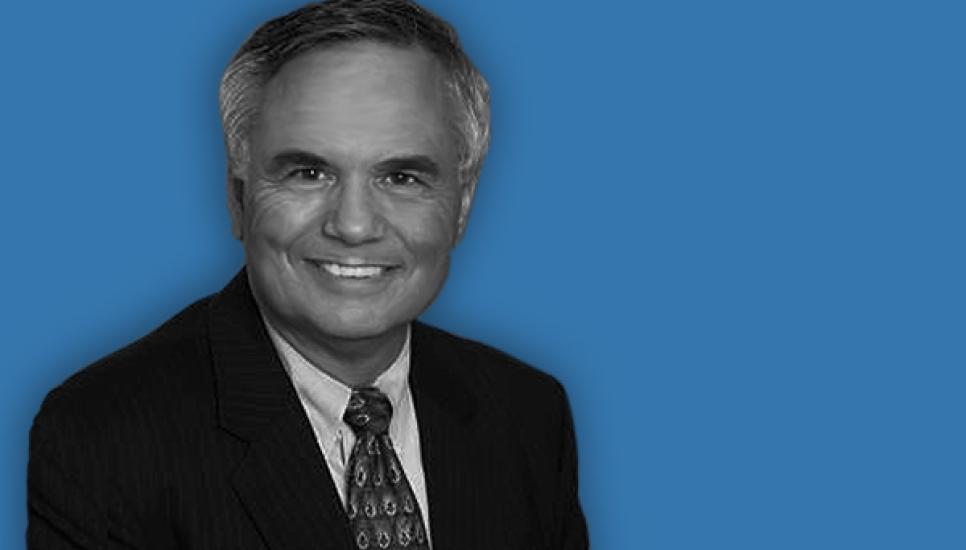US economic outlook and lessons from British policy

President of Dynamic Economic Strategy, former managing director and chief economist for Wells Fargo Securities, prolific author and in-demand financial expert, John Silvia gives Campden FB exclusive insight into why inflation remains the number one issue for investors.
Recent policy actions by the British government - and the market-driven intervention by the Bank of England - highlight the principle that risks in the financial markets can emerge from outside the financial markets themselves. In addition, for investors, the advantage in commodities and real estate investing has emerged even stronger in the current inflationary environment.
Inflation remains the number one issue as reflected in the persistent, sticky, price inflation for fundamental goods/services. For example, core consumer prices (the Federal Reserve’s benchmark inflation target) rose five per cent, annualised, over the past three months and 4.9% over the past year. This persistence of inflation sets the tone for our investment thinking.
The phrase ‘Treasury debt is risk free’ carries no value for investors.
Persistent inflation lays out the path for further interest rate increases by central banks and continued pressure on equity and fixed income returns. For fixed income investors, for example, the higher policy rates and inflation will lead to a reassessment of market interest rates and how the long-run path of inflation/rates will influence the returns on cash, bonds, and equities. The phrase ‘Treasury debt is risk free’ carries no value for investors.
Why a higher inflation pace going forward? We have cited three structural changes in the global economy that raise the risk profile for the inflation outlook. First, there is a deglobalisation of trade and this means a shift in production to the home markets but also, in the short run, a higher cost of goods sold. Second, the shortage of labour persists and, in part, this reflects the decline in Iabour force participation of older workers. For a given pace of demand, fewer workers leads to upward pressures on labour costs/prices.
Finally, there is a geopolitical fragmentation that puts a higher floor on inflation rates of traded goods. This has been particularly true in Europe with its struggle to source the energy for continued industrial production. This fragmentation also has resulted in a breakdown in global energy markets particularly for oil and natural gas.

Finally, higher interest rates have put a damper on equity returns this year and have lowered economic forecasts for growth in the US, Eurozone and the UK for the year ahead.
Debt fundamentals have deteriorated for emerging market investors as a stronger US dollar and higher interest rates have raised the carrying costs of sovereign debt issued in dollars.
Yet, higher inflation has also opened the doors for portfolio diversification to reduce risk by looking at the returns available in real estate and commodities [1].
Selectivity is the story for savvy investors and their advisors. For example, asking apartment rents are up over 20% since January, 2020, for the US cities of Tampa, Atlanta, Charlotte and Austin. Demographics matter and in-migration is a significant factor in rents.
Meanwhile, industrial-asking rents at 14%-plus, are easily beating inflation in such transportation hubs as Tampa, Phoenix, Salt Lake City and Columbus, Ohio.
While the headlines of flat office rents in New York City, Washington DC and Detroit get the headlines, the opportunities are there in other markets and other forms of commercial real estate [2].
Our outlook is that the Fed’s pursuit of inflation stability will bias interest rates upward and slow economic growth.
The gains in wheat and oil prices are obvious given the headlines. However, producer prices for all commodities, as measured by the US Bureau of Labor Statistics, are up double digits year-over-year for 2021 and 2022. Metals prices are up 20% in both years.
On net then, our outlook is that the Fed’s pursuit of inflation stability will bias interest rates upward and slow economic growth. Meanwhile, the Fed, Bank of Canada, the Bank of England and the European Central Bank will continue to raise benchmark policy rates.
While economic growth has slowed in the US, the strength of the dollar continues as global investors see a flight to safety channel for their investments.

Our outlook remains for modest, but subpar, economic growth with the acknowledged risk of recession given the heightened pursuit of slower inflation exhibited by the Fed. Interest rates are likely to rise with Fed actions.
Meanwhile, slower economic growth and higher interest rates translate into lower profit growth in 2023 relative to both 2022 and 2021 and thereby a tougher investment horizon for traditional publicly traded equities and corporate debt investments.
For the past eight months, the evolution of the economic data has supported the case that economic and financial markets will not return to the pre-2019 era. Opportunities for alternative investment vehicles have opened instead.
[1] “Retail Real Estate Is Enjoying Its Biggest Revival in Years,” Oct. 4, 2022, Wall Street Journal
[2] “Commodity-Trading Hedge Funds Are Having a Strong Year,” October 05, 2022, Wall Street Journal






